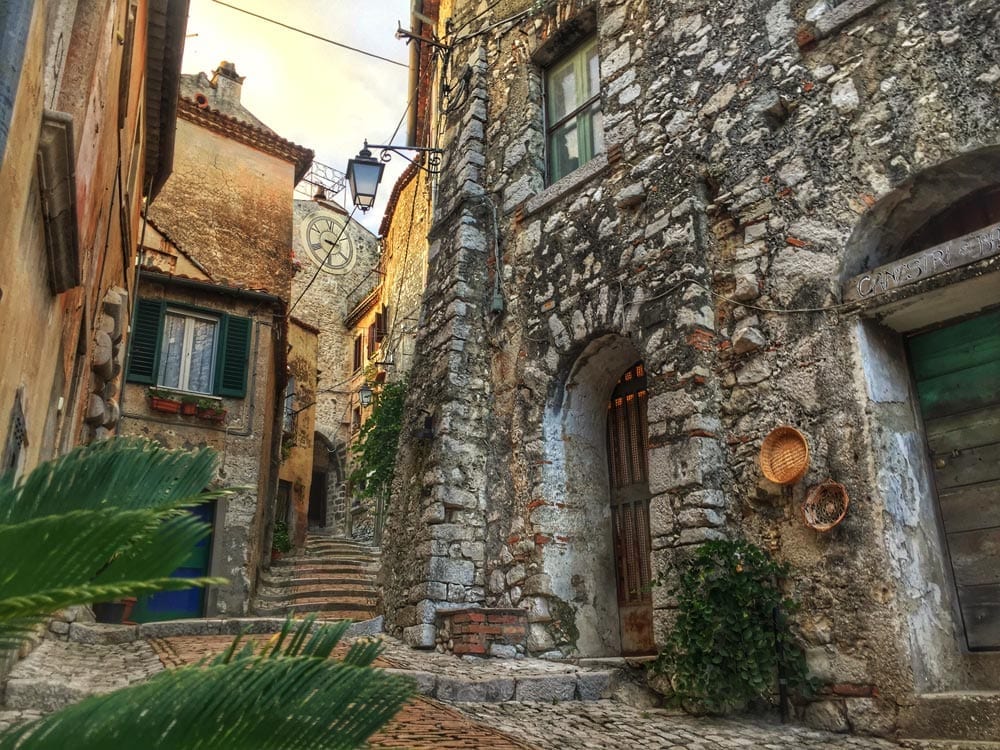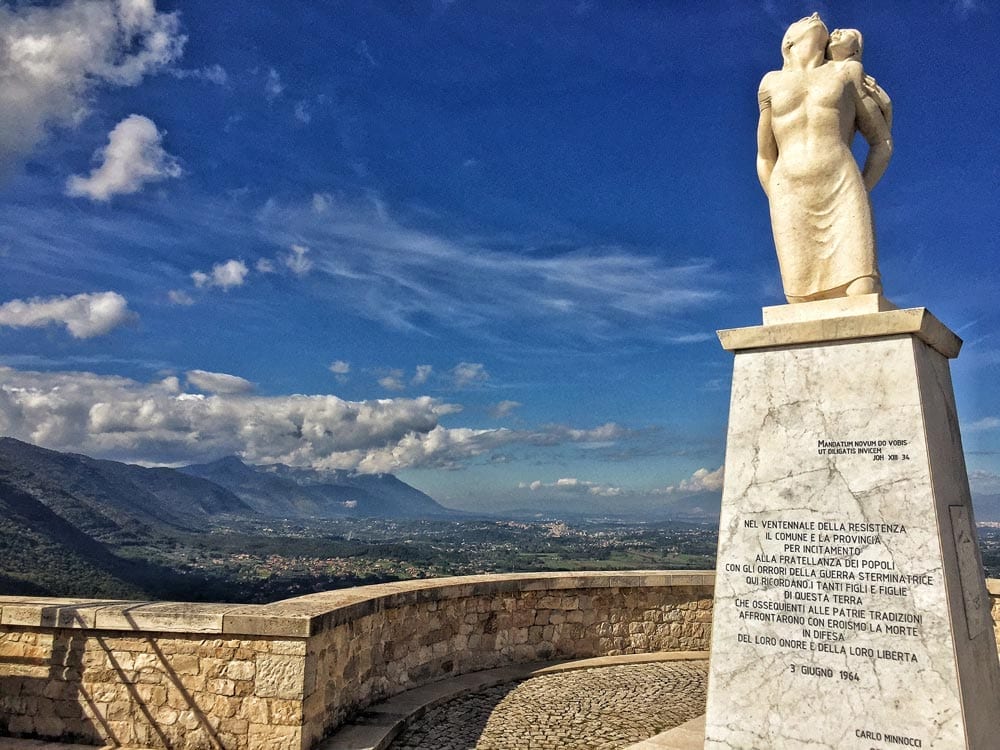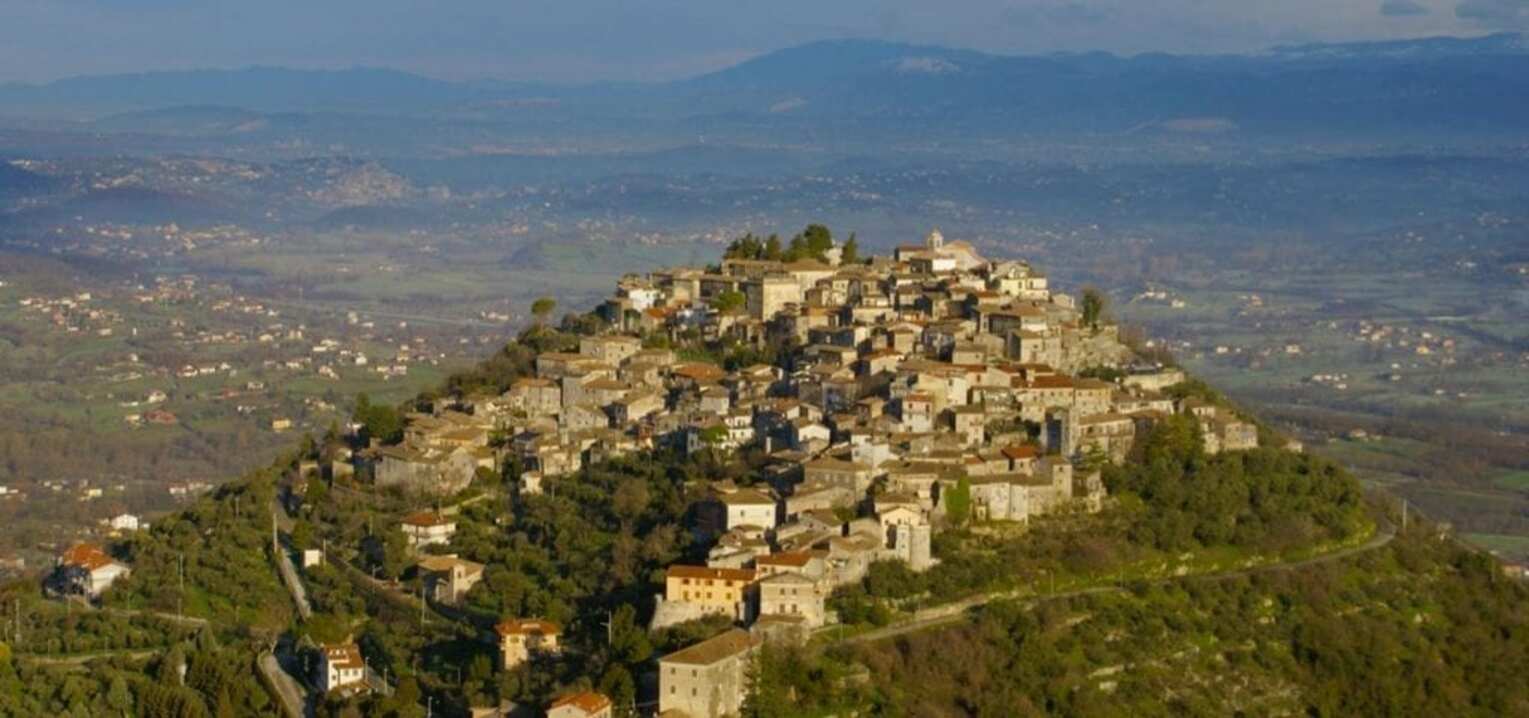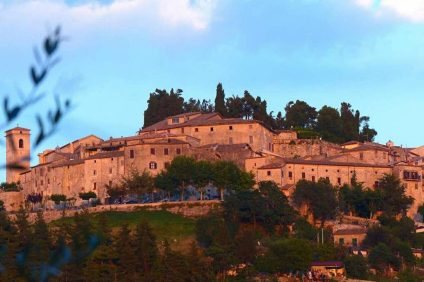Castro dei Volsci is a delightful village perched on a hill, located in the province of Frosinone, in the place where the border between the Papal State and the Kingdom of Naples was once marked. Also known as “the Balcony of Ciociaria” for its viewpoints, from which you can enjoy a breathtaking view that embraces the Sacco Valley, it is a treasure chest of history and legend. The presence, in the village, of symbols engraved on walls, portals and steps, such as Golgotha, the Triple Walls or the Flower of Life, suggests that the Knights Templar stopped here. In autumn and winter, on foggy days, the town that appears suspended in the clouds takes on an even more magical and evocative appearance.

The historical center
The name Castro derives from the Latin castrum (fortified camp), while Volsci is the name of the population who settled in this area between the XNUMXth and XNUMXth BC. The village has a very beautiful historic centre, with stone houses and narrow streets paved in cooked. It is accessed through the Door of the Valley, with its medieval tower, which is one of the four passages that opened in the original city walls, partly visible along Via Civita.

In the historic center there are the “Shops of Queen Camilla”, from the name of the legendary queen of Volsci, who opposed the advance of Aeneas and his lineage. Ancient artefacts, such as jewelery and lace, are displayed in them. During the Christmas period, the village becomes a real crib: the inhabitants parade in period costume and, from the windows in the old shops, reopened for the occasion, traditional objects are displayed.

Castro dei Volsci: the churches and the treasures
The churches are valuable, such as the one dedicated to Santa Mariarisalente, from the 1537th century, in Romanesque style, inside which there is an eighteenth-century organ and a splendid marble holy water stoup in the shape of a lily. Another interesting church is the baroque church of Santa Oliva, in which an altar from 542 and a painting depicting San Sebastiano stand out. Built by the Benedictines between 552 and XNUMX AD, the Monastery of San Nicola is the guardian of valuable Byzantine-style frescoes dating back to the XNUMXth century, depicting scenes from the New and Old Testaments.

In addition to the churches, the statue of Ciociara mother, created in memory of the women raped during the Second World War. Installed on a panoramic balcony, which is the best place to enjoy the view of a magnificent area, where abbeys and monasteries stand. Not far from the village, lies the archaeological area of S. Maria del Piano. Here the remains of villas and spas from different eras have been found, as well as a necropolis from the XNUMXth-XNUMXth century. AD always not far from the town, there are the Pastena Caves, which represent a naturalistic jewel of Ciociaria. Here nature reigns supreme, in fact, the territory is partly beautiful Regional Natural Park of the Ausoni Mountains and Lake Fondi, guardian of precious biodiversity.

Birthplace of Nino Manfredi
Castro dei Volsci is also known for being the birthplace of the actor and director Nino Manfredi, who passed away in 2004. The permanent exhibition visible in the Clock tower, and a bas-relief created by the artist Umberto Cufrini. The town is also appreciated for its food and wine. There are various culinary specialties prepared here, starting with fini-fini (tagliolini seasoned with a sauce based on chicken offal), to tonnarelli alla ciociara, and ending with the excellent desserts. The village, considered one of the most beautiful in Italy, is undoubtedly worth visiting.
(Photo: The most beautiful villages in Italy)





